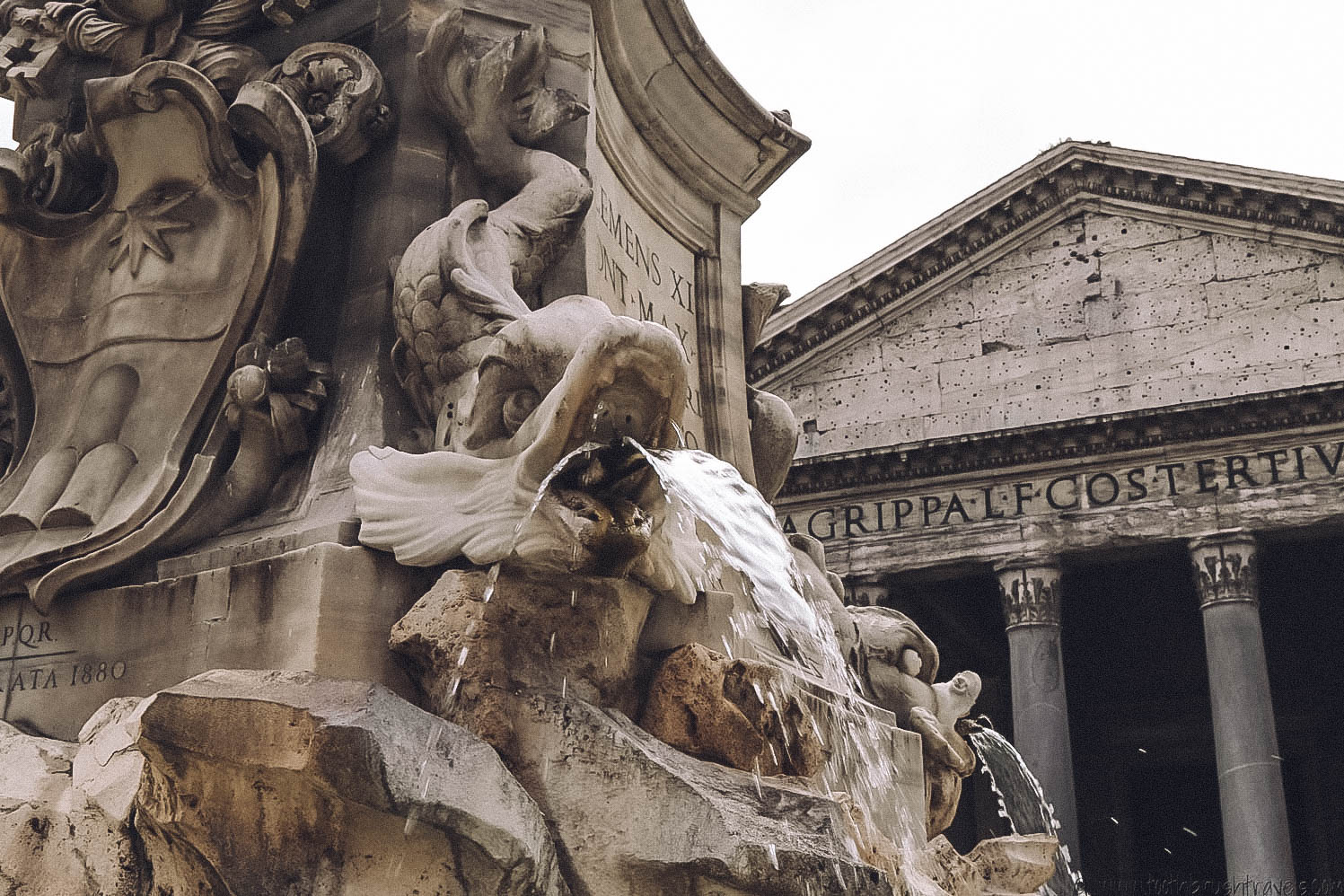Visiting the Pantheon in Rome was something that happened by accident.
You see, I do this thing where I don’t really research places I’m going to. I’ll have a brief look at the weather so I know what to pack, put out a few messages to foodie friends to see if there are any restaurants that I shouldn’t miss and… Well… That’s kind of it.
I know, I know, I should plan better.
But to be honest I avoid it because I like learning about things in retrospect.
I like learning about the intricacies of a place after I’ve seen it with my own eyes. I like discovering what things were actually used for, after making up my own assumptions. I don’t know why I work this way, it’s just how it is. Set itineraries have always felt too strict and so my travel style developed into one where I wander and hope for the best. It usually works out pretty well and this was no exception in Rome, as whilst I was searching for a place to buy a bottle of water, I ended up standing outside the Pantheon… With hundreds of other people.
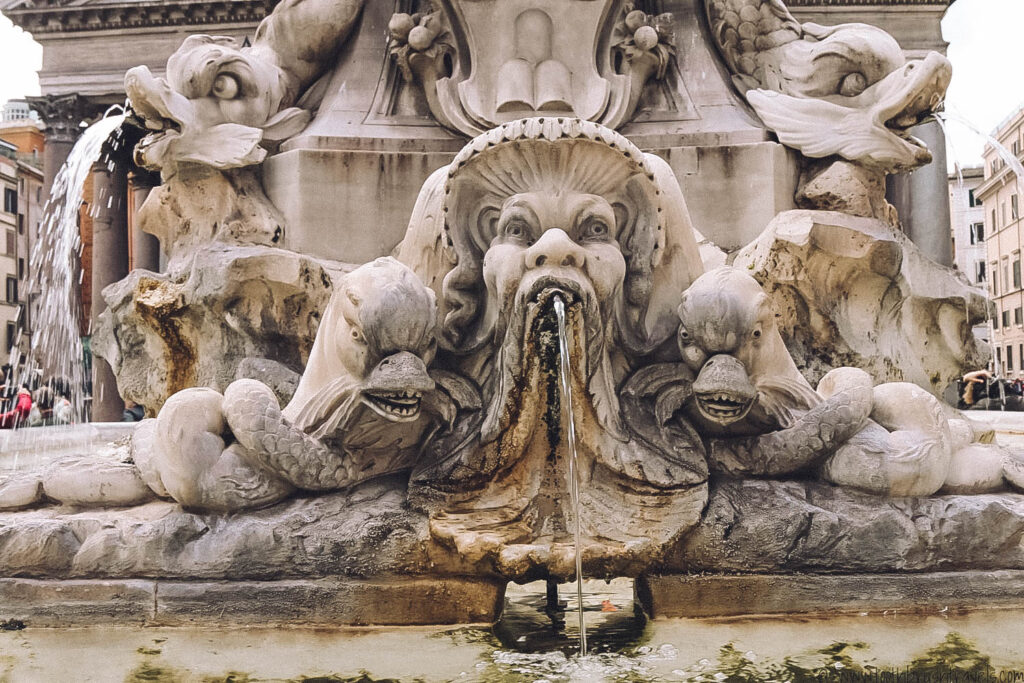
Waiting in that queue without provisions seemed like a terrible idea, so I grabbed some water and snacks before venturing into the square to find the end of the queue. Trails of people stood orderly around each other until the queue disintegrated into chaos, winding backwards and forwards upon itself until there was no way to tell where the queue ended and passersby began. But a short while later, I made it in!
And if you don’t fancy queueing—you can buy a skip the line ticket!
Rumour has it that the Pantheon is the most influential and well-preserved building from Ancient Rome. This interested me because I’m from a Roman city myself, but the most preserved elements there are the cathedral and some old walls. Which is significantly less exciting.
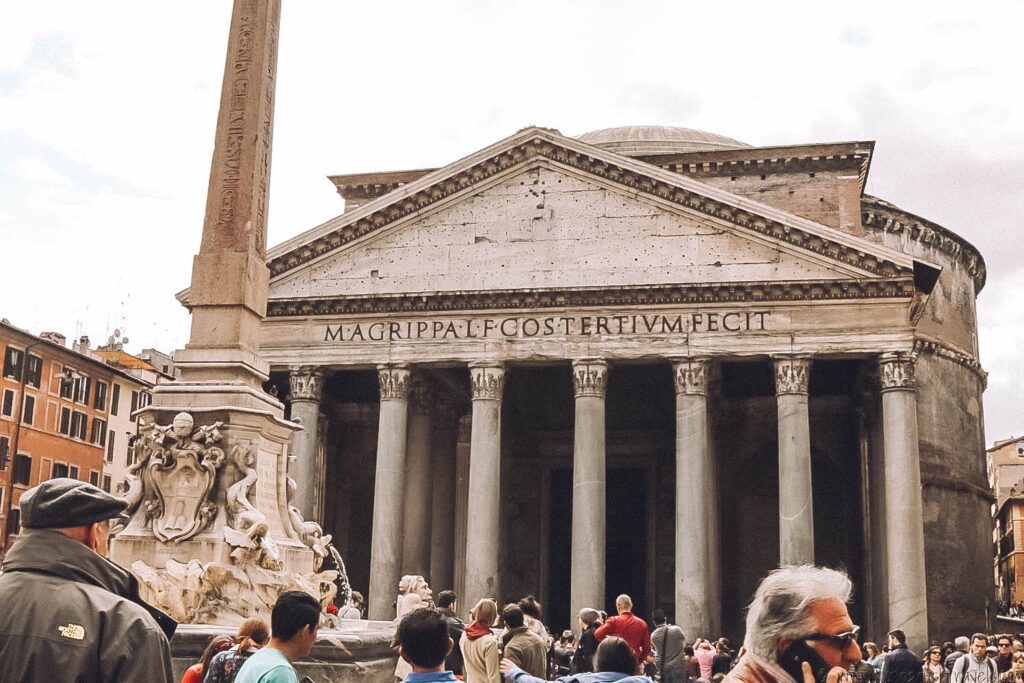
The Pantheon, however, is much more majestic. It was assumed that the Pantheon was a former temple, but now it’s a church—something I was reminded of when I got to the entry point (wearing a cami, trousers and a blazer) I was told I needed to cover up. So be conscious of your attire when you visit!
The Pantheon was built many moons ago by Marcus Agrippa during the reign of Augustus as a temple dedicated to the gods and goddesses of ancient Rome. And over the years it has been used as a temple, a church, a storehouse and a tomb for important figures.
Rumour has it that the original Pantheon was built and dedicated to Romulus (the mythological founder) after he ascended to heaven from the site, but the exact age remains unknown. However, it’s assumed by historians that Agrippa (Emperor Augustus’ right-hand man) built the first Pantheon in 27 BC. But then it burned in the great fire in 80 AD… Before being rebuilt, struck by lightning and burned down again in 110 AD.
The Pantheon really didn’t have much luck back in those days!

The Pantheon (as we know it today) was then rebuilt (again lol) by Emperor Hadrian in 126 AD—so even if you disregard the initial versions, the Pantheon is still pretty damn old. Yet it remained so well preserved because Phocas, the Byzantine emperor, gifted it to Pope Boniface the IV back in 609 AD. Which was rather generous if you ask me—nowadays you’re more likely to receive socks and scents for presents.
As you walk towards the Pantheon it’s hard for your jaw not to hit the floor. Towering Corinthian columns are strewn out front supporting the portico. Standing at 11.8m tall, and 1.5m in diameter, they’re by no means small. They’re by no means something which should be overlooked either, because whilst they might appear to be “just columns”, these columns have had quite the journey.
A journey which started with them being dragged over 62 miles by a wooden sledge, before being transported by barge down the River Nile. The columns were then transferred to vessels and taken across the Mediterranean Sea to the Roman port of Ostia, where they were transferred onto barges once more, and taken up the Tiber River to Rome. Quite the trip!

I didn’t snap that many photos because people were praying, and even though the Pantheon is open to the public, it still felt intrusive to have my camera out in a place of active worship. I’m not religious myself but I always feel like worship should take place outside of tour times. Not because I have an issue with praying in any form, but because it must feel bizarre to pray whilst surrounded by so many people.
Of all of the elements which stood out at the Pantheon, I’d say the most fascinating was the architecture. From the outside, the Pantheon appears rectangular, but it is only the first room (known as the cella) which has corners, and on the inside (rotunda) it is completely round with niches for statues of the gods and a reputation for its acoustics—which reverberate throughout the space.
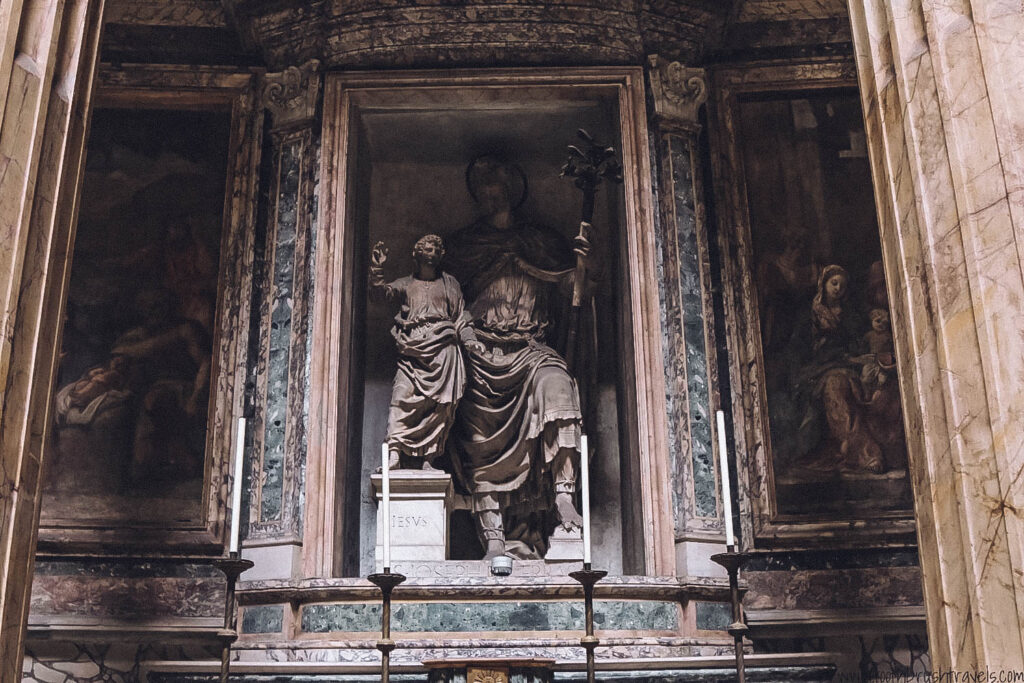
The interior is formed using a series of arches which intersect, with each arch resting on piers. A huge feat considering the weight of the materials which were used. But the Romans were aware of the nature of the materials they used to build and so they constructed the Pantheon using the heaviest materials at the bottom, with them becoming more lightweight as they reached the top. The base layer consisted of Travertine, with each layer after that becoming a mixture of resources.
Travertine and Tufa were followed by Tufa and Brick, and then throughout the dome section, brick was used, before being finished off with pumice—the most lightweight of materials.
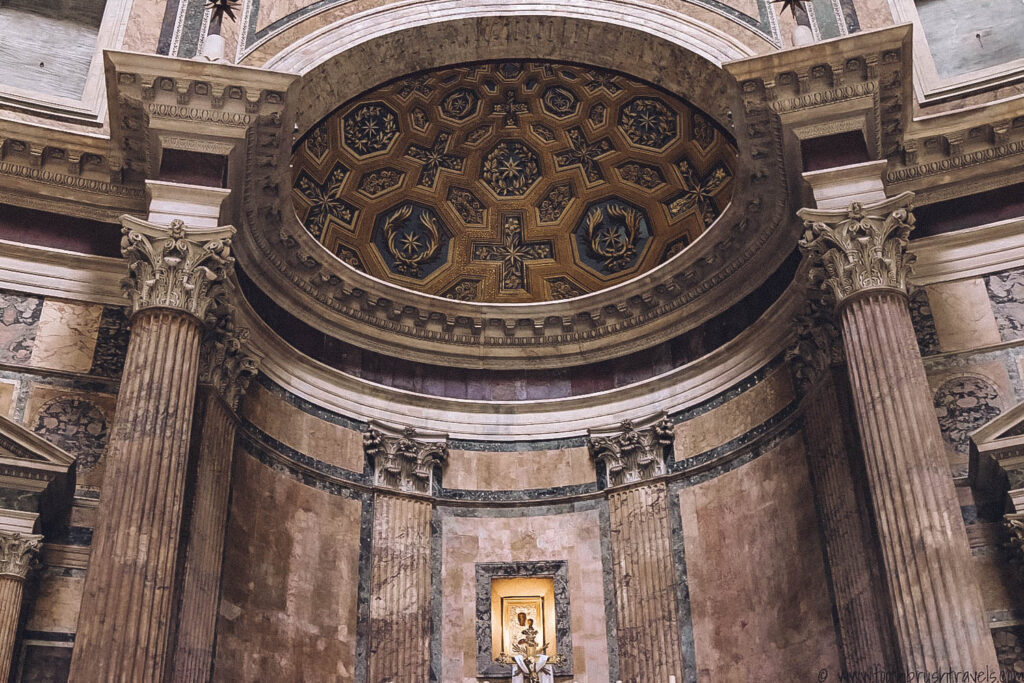
It’s this part (the dome) that I think is the most striking. Measuring 142 ft in diameter, it’s topped with a 9 ft wide oculus which allows natural light to flood in and illuminate the interior. It’s gorgeous, and is considered one of the best-preserved examples of ancient roman architecture and an important cultural symbol. Hence why it’s so popular with tourists! And if you want to be one of them (you should!), be sure to book a tour and check it out on your next visit.
